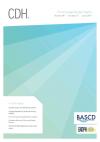Community Dental Health

- Cover Date:
- June 2017
- Print ISSN:
- 0265 539X
- Vol:
- 34
- Issue:
- 2
PeP-SCOT a health coaching intervention for people in prisons: the development of the intervention protocol
Abstract: There is a need for an alternative approach for health promotion prisons since previous work has indicated that health education, while improving health knowledge, does not result in behaviour change. Evidence has suggested that a health coaching assists in this regard. However, the question remained whether this approach would be appropriate and possible in prisons? This paper presents the public health strategies used to work in partnership with prison management to address challenges and accept opportunities as a health coaching intervention protocol was developed for oral health and wellbeing in the prison setting.
Key words: prison, oral health improvement, health coaching
doi:10.1922/CDH_4019Cinar05
- Article Price
- £15.00
- Institution Article Price
- £
- Page Start
- 97
- Page End
- 101
- Authors
- A.B. Cinar, C. Jones, D. Richards, F. Fernandes, P. White, R. Freeman
Articles from this issue
- Title
- Pg. Start
- Pg. End
- Communities in action: developing a dental ambassador training programme for adults with learning disability
- 77
- 79
- Public health intervention over four decades for the children in the Australian Capital Territory: Have we reached the point of diminishing returns?
- 84
- 87
- Relationship between mental health risk factors and oral symptoms in adolescents: Korea Youth Risk Behavior Webbased Survey, 2013
- 88
- 92
- PeP-SCOT a health coaching intervention for people in prisons: the development of the intervention protocol
- 97
- 101
- Productive efficiency and its determinants in the Community Dental Service in the north-west of England
- 102
- 106
- Socio-demographic and area-related factors associated with the prevalence of caries among preschool children in Greece.
- 112
- 117
- Dental caries experience, rather than toothbrushing, influences the incidence of dental caries in young Japanese adults
- 118
- 121
